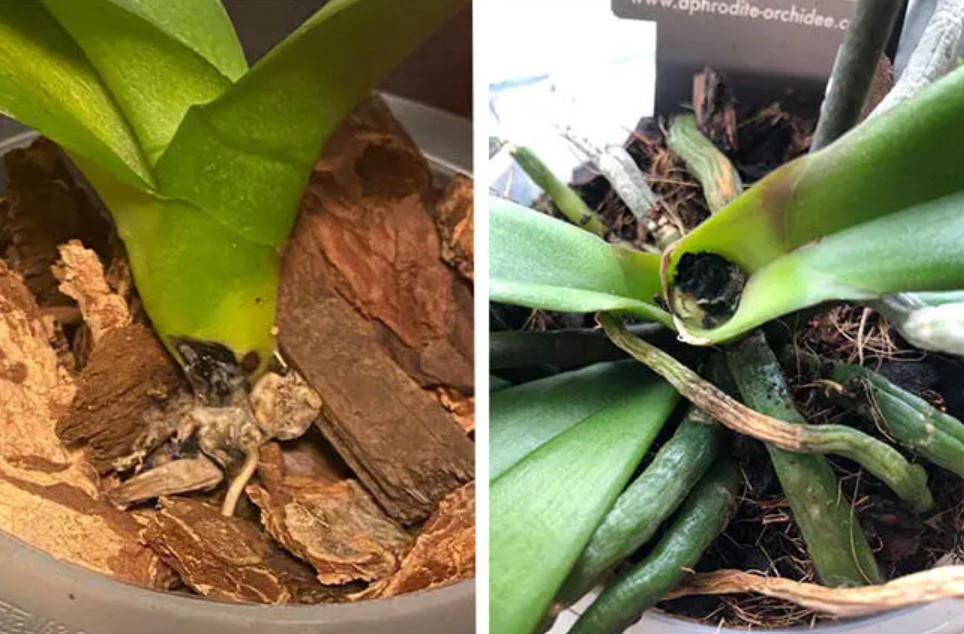Orchid crown rot is a devastating condition that affects many orchid enthusiasts. It is caused by fungal infections, and can be identified by the blackened areas of the plant’s crown.
Orchids suffering from this condition will often have a wilted appearance and may eventually die if not treated quickly.
The most effective way to prevent orchid crown rot is to make sure that the plant has proper drainage. Orchids require well-draining soil and should never be planted in soil that holds too much moisture.
A good quality potting mix should also be used, as this will help reduce the chance of developing root rot.
What Is Crown Rot in Orchids?
Crown rot is an often serious and destructive fungal disease in orchids, especially Phalaenopsis species. It occurs due to the presence of an infection-causing soil-borne fungus that is attracted to moist, wet environments.
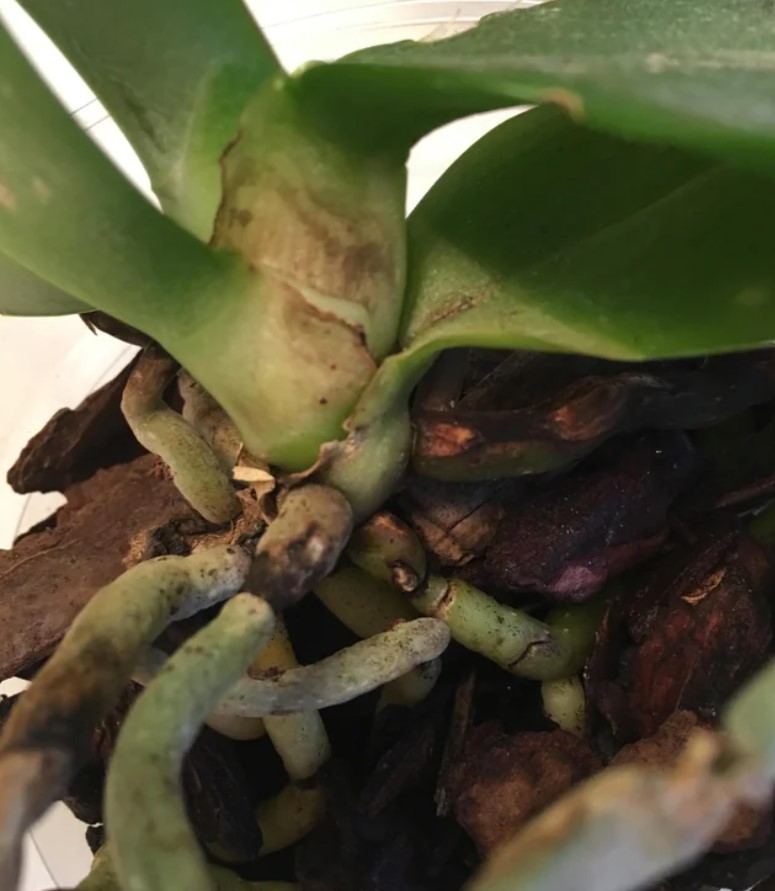
When these conditions are present in the crown (where the leaves meet the stem) of the plant, the fungus can quickly spread and kill the plant if left untreated.
This type of fungal infection is particularly common in Phalaenopsis orchids because of their monopodial structure. The angle of the leaves allows for water to run down and collect in the crown, creating an inviting environment for fungal growth.
What Causes Crown Rot In Orchids?
Crown rot is a common issue among orchid plants, and it can be caused by lapses in watering.
This condition can be identified when the rot appears in the crown of the plant – the area where leaves and stems meet – and it can quickly spread, leading to blackened stems, leaf shedding, and ultimately death of the plant.

If it is caught early, however, the plant may be saved. The main factor that leads to crown rot is a fungal infection which often occurs when orchid plants are watered too frequently and allowed to stay wet for too long.
This creates an ideal environment for fungal growth,Crown rot is a common issue among orchid plants, and it can be caused by lapses in watering.
This condition can be identified when the rot appears in the crown of the plant – the area where leaves and stems meet – and it can quickly spread, leading to blackened stems, leaf shedding, and ultimately death of the plant. If it is caught early, however, the plant may be saved. Phalaenopsis orchid species go through this condition quite often.
How Can You Prevent Crown Rot?
How to prevent limp orchid leaves? Crown rot is a common problem for many orchid growers. To help prevent this disease, it is important to water your plants correctly. The best way to do this is to only water the roots and potting media and avoid getting any water on the leaves or in the crown of the orchid.
If you accidentally spill some water into the crown, immediately tilt the orchid to its side and pour out the excess water. Additionally, use a paper towel or napkin to absorb any remaining water from the orchid’s crown.
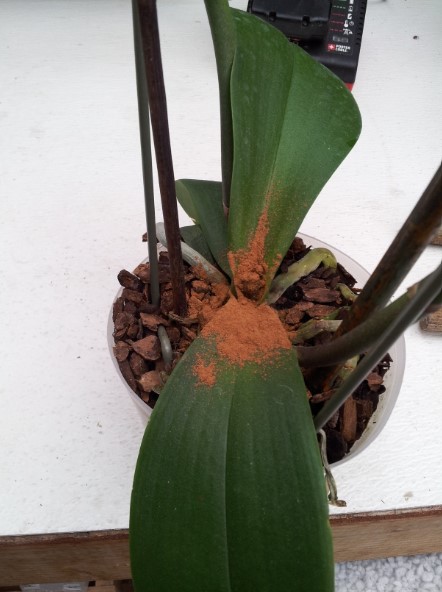
Following these steps can help you prevent crown rot and keep your plants healthy. How Can You Prevent Crown Rot? By following this simple guide on how to properly water orchids and using a paper towel or napkin to absorb any remaining water from the crown, you can help protect your plants from crown rot.
How To Treat Orchid Crown Rot
Find out my easy tip for treating orchid crown rot. Orchid crown rot is a fungal disease that can cause significant damage to an orchid plant. In order to treat the problem, one of the most effective and natural methods is to use ground cinnamon. This naturally-occurring fungicide has been found to be quite successful in treating crown rot.
To properly apply it, you should first sprinkle some ground cinnamon powder directly into the orchid crown. You may want to be gentle and start with a small amount, as too much of this antifungal agent can dry out the plant’s roots. After you have applied the ground cinnamon, make sure that you keep the area around your orchids clean and free from debris.
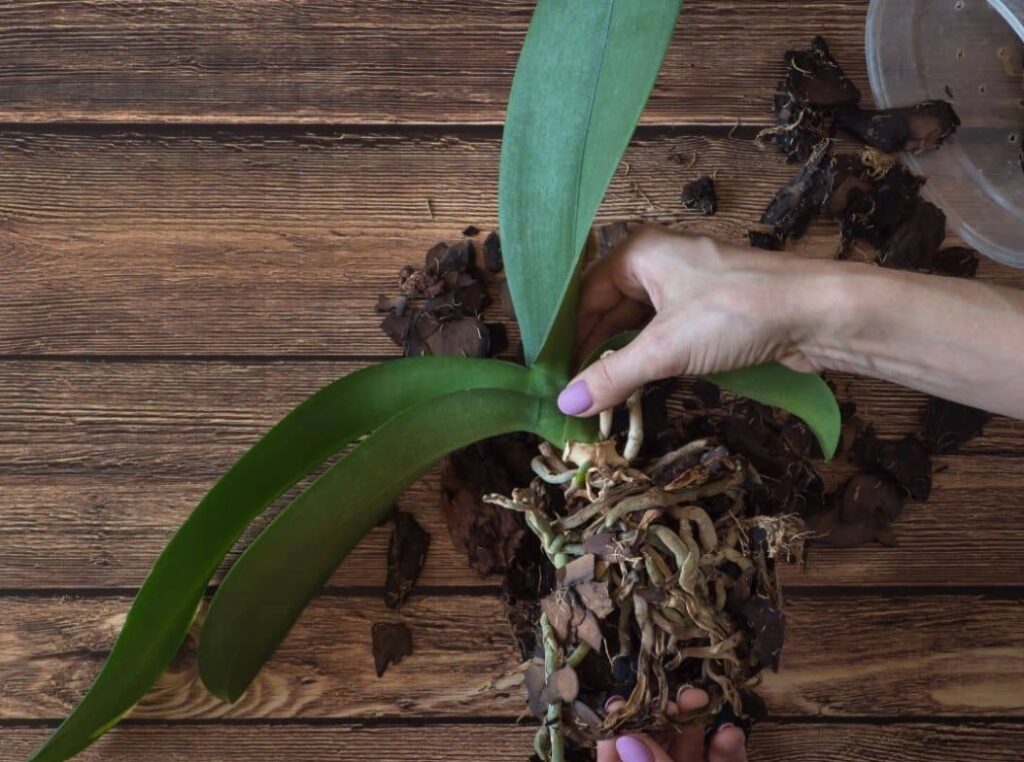
The orchid will slowly grow new leaves and eventually, form new flower spikes as it recovers.
Water Your Orchids Early In The Day
Watering your orchids early in the morning is a great idea for a number of reasons. Watering your orchid early will ensure that the potting media has enough time to dry out before nightfall, which prevents root rot and other diseases caused by over-watering.
Watering your orchid in the morning also means that if you accidentally get water into the crown and forget to dry it immediately, the plant will have time to dry out naturally before nightfall.
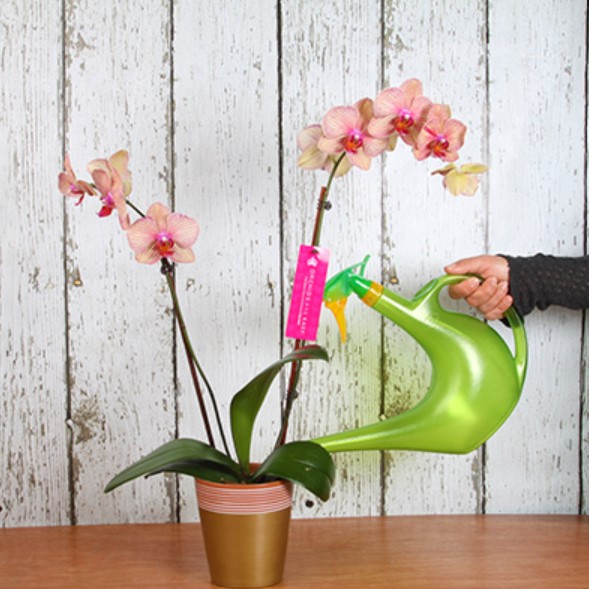
The best way to water your orchid is to avoid getting any water into the crown at all. Watering from underneath is probably the best method for this purpose; pour lukewarm (not cold) water into a saucer or tray, and let your orchid sit in it for about 10-15 minutes.
This will allow the potting media to soak up the moisture it needs without getting any water into the crown of the plant. After 10-15 minutes, remove your orchid from the saucer and allow any excess water to.
Air Circulation
Air circulation is one of the most important steps you can take to prevent crown rot in your orchids. Air circulation helps reduce humidity, which is key to avoiding crown rot—too much moisture in the air creates a warm, damp environment that encourages this fungal disease.
Additionally, air circulation dries up any wet areas on the plant, which helps to prevent spores from developing and spreading.
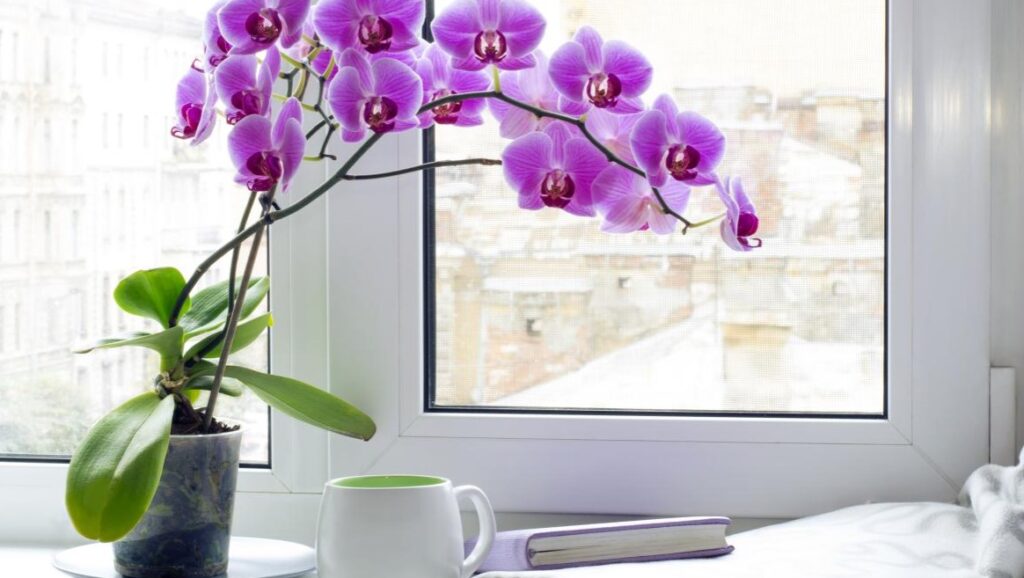
In warmer weather, you can move your orchids outside for fresh air circulation. Natural breezes provide the best air movement around your orchid plants. Indoors, a table fan or ceiling fan set at the lowest setting will help with air circulation in the room without blowing directly.
Empty Saucers Or Trays Under The Orchid Pot
In order to prevent crown rot and other diseases, it is important to ensure that your orchid is not left standing in a pool of water. Empty saucers or trays under the orchid pot can help to catch and drain off excess water, while also preventing the potting media from becoming overly saturated and creating an ideal environment for the growth of bacteria and fungi.
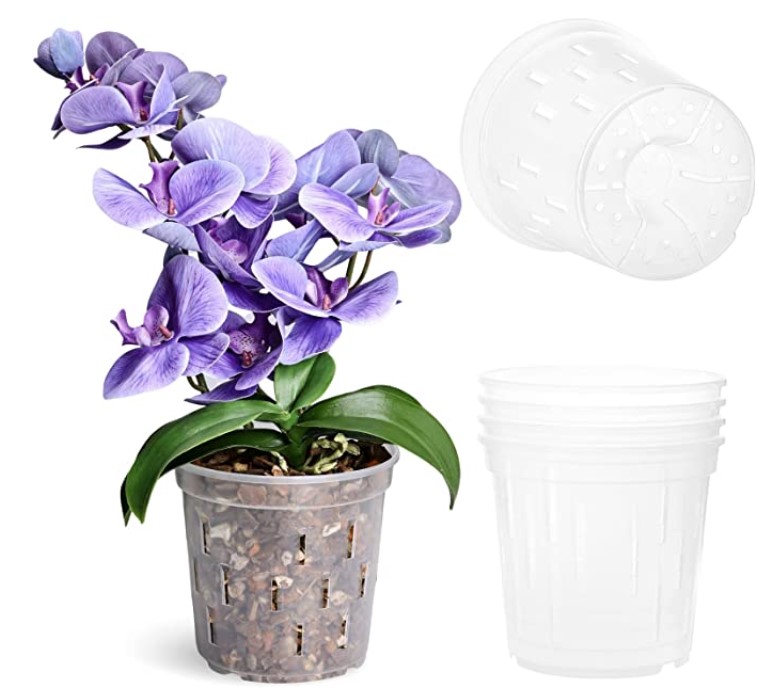
Empty the saucers or trays after watering to eliminate any standing water. This can help to create a healthy environment for your orchid and promote its growth. Additionally, make sure to check the potting medium regularly to ensure it is not overly wet, as this can lead to root rot.
How Do You Treat Crown Rot?
Once the affected orchid has been isolated, there are several ways to treat crown rot and stop it from spreading. First, you should clean off any visible rotten material with a cotton swab. Remove all of the dead and decaying plant material, as this will help prevent further deterioration.
Next, consider treating the orchid with a fungicide, such as neem oil or a product containing potassium bicarbonate. These products can help to stop the spread of crown rot and should be applied according to the manufacturer’s instructions.
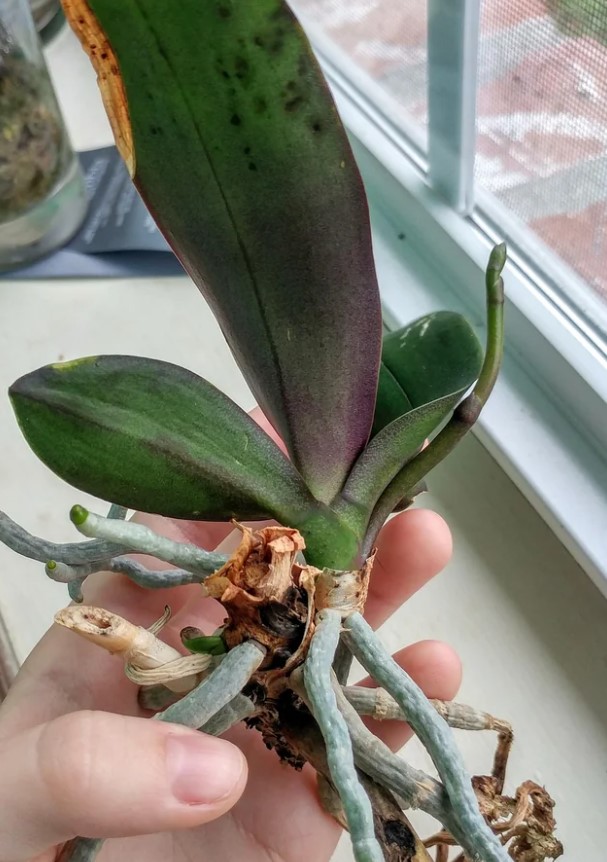
It is also important to maintain proper humidity levels when treating crown rot in your orchid. This will help prevent further infection and encourage the healing process. The ideal humidity for orchids is between 50 and 80 percent, so it may be wise to use a humidifier or place the plant in an area with high humidity.
Hydrogen Peroxide
Hydrogen peroxide is a simple, safe, and inexpensive solution for disinfecting your orchid. It is one of the most common treatments for fungal infections in plants as it can help to kill off any fungus growing on the surface. To use hydrogen peroxide as a treatment, first purchase a bottle of 3% hydrogen peroxide from your local drug store or grocery store.
It is typically sold in a brown square-shaped bottle next to the first-aid supplies. Pour a small amount of hydrogen peroxide into the base of the orchid’s crown – you will likely see some bubbling and fizzing as it works to disinfect the plant and treat the infection.
Ground Cinnamon
Ground cinnamon powder is an effective natural fungicide that can be used to treat fungal infections in orchids. Ground cinnamon has drying properties which can really help to dry out the crown rot infection in orchids. Sprinkling some of it into the crown of your plant can help combat the infection and keep the area dry.
It is also possible to save an orchid whose leaves have already fallen off. First, you must remove all of the dead tissue from the crown, then sprinkle some ground cinnamon powder on top. By doing this, you are providing your orchid with a natural fungicide and helping it to dry out.
Answers on questions:
What do I do if my orchid has crown rot?
Crown rot is a common problem for orchids, caused by fungi that can quickly spread throughout the plant if not treated. Fortunately, treating crown rot in orchids is simple. All that is required is to pour a small amount of hydrogen peroxide over the affected area.
Hydrogen peroxide works by breaking down into oxygen and water, killing the fungus and allowing the orchid to recover. It is important to note that if you notice any signs of crown rot on your orchid, it is best to treat it right away as further damage can reduce the chances of a successful recovery.
Preventing crown rot in orchids is just as easy.
Can you save a rotting orchid?
Orchids are known for being particularly sensitive to root rot, which is why it’s important to ensure that they’re planted in well-draining soil and are watered properly. If you notice that your orchid’s leaves are drooping, and flowers may have dropped off, it could be a sign of root rot.
If caught early enough, it may be possible to save your orchid. Start by carefully removing the plant from its current soil and allowing the roots to dry out completely. Once they’re dry, repot the orchid in fresh, well-draining soil and monitor it closely for any further signs of rot. With proper care and attention, you may be able to save your orchid.
Should I cut rotten roots orchid?
Yes, you should cut rotten orchid roots before returning the plant to its pot. It is important to do this with sanitized shears in order to prevent bacteria and fungi from spreading further. To achieve this, trim dead roots about an inch above the point where they have begun to die. This will give the plant a chance to regrow healthier roots once replanted.
Dead orchid roots might appear in a few different ways, so it is important to inspect the roots before deciding whether they need trimming. If you notice any weak, mushy, browning, or discolored roots, these are more likely signs of rot and should be removed.
After completing the trim, you should repot the orchid in fresh soil and water as usual. Following these steps will help your plant thrive and recover from root rot.
How do I know if my orchid has crown rot?
Crown rot is a common problem in orchids and is easily identified by the wilting and breaking off of leaves at the base of the stem. In more advanced cases, the entire base of the orchid turns black and may be accompanied with an unpleasant smell. Left untreated, crown rot can quickly spread up the stem to other parts of the orchid and can be fatal.
If you suspect that your orchid has crown rot, it is important to take immediate action. If caught early enough, there are steps that can be taken to save the plant.
The most common symptom of crown rot is drooping leaves at the base of the stem, with other symptoms including blackening or discoloration of the stem and leaves, an unpleasant smell, and wilting of other parts of the plant.
If you notice any of these signs in your orchid, it is important to act quickly by providing extra humidity, moving the plant to a shadier spot, and regularly checking for signs of rot. If left untreated, crown rot can quickly spread up the stem and be fatal for your plant, so it is important to stay on top of any signs to ensure your orchids health.
By staying alert, regularly checking for changes in appearance, and providing extra humidity, you can help prevent crown rot in your orchid plants. Read also…

